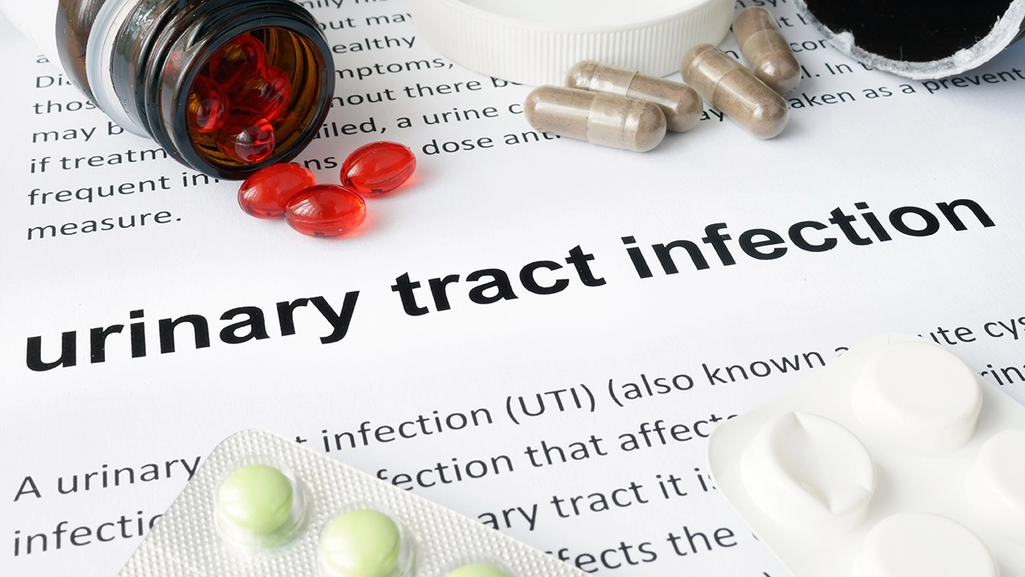Update on Paediatric UTI
Speaker: Dr. Michael Buettcher, Switzerland
Key Highlights
The session discussed key elements from the Swiss pediatric UTI guidelines, recently published complicated pediatric UTI guidelines, and the European pediatric urology guidelines—particularly the chapter on UTIs.
Case Introduction:
A 2.5-month-old male presented with:
-
Fever (up to 39.2°C) for 1 day
-
Rhinorrhea, reduced feeding, one-time vomiting
-
Normal nappies, good general condition, normal birth and family history
Clinical Reasoning:
-
Prevalence of UTI in this age group: ~7–8% overall and up to 20% in non-circumcised males <3 months due to uropathogenic E. coli colonization and immature immunity
-
Ethnicity matters: Caucasian male infants are more at risk than African infants.
Risk Factors for UTI in Children:
-
Congenital Anomalies of the Kidney and Urinary Tract (CAKUT)
-
Common in the pediatric population.
-
Includes structural anomalies of:
-
Kidneys
-
Ureters
-
Lower urinary tract
-
Bladder and Bowel Dysfunction (BBD)
-
Seen particularly in children learning to become continent.
-
Involves:
-
Dysfunctional urine flow
-
Constipation
-
Micturition disorders
-
Anatomical and Hygiene-Related Factors in Girls
-
Vaginal reflux
-
Labial synechiae (labial adhesions)
-
Excessive perineal hygiene (which may disrupt the natural flora)
-
More common in preschool-aged girls
For suspected febrile UTI or pyelonephritis (PN), the following investigations are recommended:
-
Inflammatory Markers (CRP, PCT): Persistently normal CRP/PCT at 0 and 12–24 hrs makes PN unlikely.
-
Blood Cultures: Needed if the patient appears unwell or requires hospitalization.
-
Full Sepsis Work-Up (BC, UC, CSF): Indicated in neonates, infants <3 months with poor general condition, or sepsis signs.
-
Chemistry (Creatinine, Electrolytes): Assess dehydration and renal function, especially in failure to thrive or electrolyte imbalances.
Accurate Urine Collection is Crucial:
-
Catheterization: Use ultrasound first to ensure a full bladder. Discard first few drops to reduce contamination.
-
Suprapubic aspiration: Cleanest method; should be ultrasound-guided where possible.
-
Urine bag: Never use for culture. For children >3 months, may help rule out UTI if dipstick is negative.
Dipstick & Sediment Analysis:
-
Look for leukocyte esterase and nitrites.
-
False negatives common in young infants (short bladder retention time) and gram-positive infections.
-
False positives due to contamination or other febrile/inflammatory conditions (e.g. Kawasaki).
When to Do a Urine Culture:
Always for:
-
Infants <90 days
-
Positive dipstick
-
Recurring UTIs or kidney anomalies
-
Clinical symptoms not matching dipstick
Antibiotic Treatment & Follow-Up in Pediatric UTI:
Speaker talked about the case he presented at the start. The child had significant E. coli growth on urine culture. Based on Swiss resistance patterns, initial IV antibiotics (amoxicillin + aminoglycoside) were started, then stepped down to oral amoxicillin once sensitivities confirmed susceptibility.
Age-Based Approach:
-
<30 days: IV antibiotics.
-
31–60 days: Start with IV, switch to oral if improving.
-
>2 months: Can begin with oral antibiotics if child is stable.
Focus on Complicated UTI in Children:
-
Neglected Area: Complicated or atypical UTIs in children have had limited detailed study.
-
Subgroups Identified:
-
Significant anatomical/functional anomalies
-
Multiple recurrent UTIs
-
Severe clinical presentation
-
Non-urological comorbidities (e.g., immunocompromised, diabetes)
-
Neonates
Case Example:
-
2-month-old male with failure to thrive, congenital hydronephrosis, electrolyte imbalance.
-
Diagnosis: Chronic E. coli UTI causing secondary pseudo-hypoaldosteronism (transient PHA).
-
Treatment: 10-day antibiotics → rapid improvement.
Diagnosis and Treatment of UTI in the Era of Antimicrobial Resistance
Speaker: Dr. Jennifer Kranz, Germany
Key Highlights
Global Burden of Antimicrobial Resistance (AMR):
A systematic analysis published in The Lancet (2023) presented a troubling forecast for AMR:
-
In 2021, an estimated 4.7 million annual deaths were associated with AMR.
-
This number is projected to rise to 8.2 million by 2050.
-
The highest AMR-related mortality rates are currently observed in Latin America, the Caribbean, Southeast Asia, with an increasing trend in Europe as well.
Shift in UTI Classification: Localized vs Systemic: The European Association of Urology (EAU) has replaced the older "uncomplicated vs complicated" classification with a simpler model:
-
Localized infections (e.g., cystitis): Generally mild, outpatient management possible.
-
Systemic infections (e.g., pyelonephritis, prostatitis, epididymitis): May require hospitalization, IV therapy, and imaging.
Risk Factors Impacting UTI Outcomes:
Certain patient factors can complicate the clinical course and reduce treatment success:
-
Age extremes: Infants and frail elderly
-
Anatomical or functional abnormalities in the urinary tract
-
Indwelling catheters
-
Other immunocompromised states
-
Antibiotic use in the past or presence of resistant organisms
-
Females: pregnancy and pelvic organ prolapse
-
Obstruction and presence of stones
Acute Cystitis Symptom Score (ACSS): A Practical Tool for UTI Assessment:
-
The ACSS is a validated questionnaire used to assess symptoms of acute uncomplicated cystitis.
-
High sensitivity: The tool has a 94% sensitivity, making it reliable for identifying cystitis symptoms. It helps differentiate between lower and upper urinary tract infections:
The European (EU) guidelines for uncomplicated cystitis and UTIs recommend the following:
-
For Uncomplicated Cystitis:
-
Diagnosis should be based on:
-
A focused history of lower urinary tract symptoms (you can use ACSS score).
-
Absence of vaginal discharge (strong recommendation).
-
Routine urine cultures are NOT recommended.
-
Perform urine culture only if:
-
Upper UTI is suspected.
-
Symptoms persist or recur within 4 weeks’ post-treatment.
-
The patient has atypical symptoms or is pregnant.
-
For Recurrent Cystitis:
-
Diagnosis should be confirmed with a urine culture.
-
Extensive workup (like cystoscopy or CT scan) has low diagnostic yield and should be reserved for atypical cases, e.g., when stones or obstruction is suspected.
-
For Pyelonephritis (Upper UTI):
-
Perform
-
Urine analysis
-
Urine culture + Antimicrobial susceptibility testing
-
Imaging to rule out underlying conditions (e.g., stones causing obstruction).
-
Treatment Recommendations:
-
First-line agents remain effective across Europe, with >90% susceptibility rates in many regions (e.g., Germany).
-
Limited scope for new antimicrobials in uncomplicated cystitis due to high effectiveness of existing ones.
Management of Severe UTIs and Urosepsis: Escalating Challenges and Solutions
-
Updated EAU Guidelines recommend a range of antimicrobials for severe UTIs and urosepsis, including last-resort antibiotics.
-
New Antimicrobials: Over the past decade, newer agents have emerged, mainly combining:
-
3rd or 4th gen cephalosporins (e.g., cefepime) with novel beta-lactamase inhibitors (e.g., tane-barbactam)
-
Carbapenems with beta-lactamase inhibitors
Emerging Therapies
-
Gepotidacin:
-
A first-in-class antibiotic targeting two topoisomerases.
-
Demonstrated non-inferiority to nitrofurantoin in EAGLE-2 and EAGLE-3 trials.
-
Showed superiority in EAGLE-3 and was FDA-approved in 2025 for use in uncomplicated UTIs in females and adolescents ≥12 years.
-
First new oral UTI antibiotic in 30 years.
-
Cefepime-taniborbactam:
-
Effective against resistant pathogens including carbapenemase-producing Enterobacterales.
-
CERTAIN trial showed superiority over meropenem in complicated UTIs.
Role of Point-of-Care Testing (POCT) in UTI Management:
POCT tools offer promise in guiding initial therapy more effectively. Key features of ideal POCT:
-
Detect multiple uropathogens
-
Perform susceptibility testing
-
Be accurate, reliable, cost-effective, and practical for routine use
Can UTI be Prevented?
Speaker: Dr. Chris Harding, United Kingdom (1:08:20 - 1:40:26)
Key Highlights
Prof. Harding provided a comprehensive overview of evidence-based strategies to prevent recurrent urinary tract infections (rUTIs), focusing particularly on non-antibiotic options in light of the global antimicrobial resistance (AMR) crisis.
Definition and Epidemiology:
Recurrent UTI (rUTI) is defined as ≥2 episodes in 6 months or ≥3 in a year. Women are disproportionately affected, with up to 50% experiencing recurrence within a year of the initial episode. AMR, especially to fluoroquinolones like ciprofloxacin, has made routine antibiotic prophylaxis increasingly problematic.
Antibiotic Prophylaxis:
-
Still the benchmark for efficacy.
-
A Cochrane review showed a relative risk (RR) of 0.21 for recurrence (NNT = 1.85).
-
However, benefits are lost after cessation—with up to 50% relapse—and contribute to antibiotic resistance.
Non-Antibiotic Strategies:
-
Increased Fluid Intake
-
RCT in 140 women with low baseline fluid intake showed:
-
~50% reduction in cystitis episodes.
-
RR = 0.53, though not as effective as antibiotics.
-
Markedly reduced antibiotic use.
-
Cranberry Products
-
Earlier evidence was mixed.
-
2023 Cochrane review (50 studies, >8,000 patients):
-
RR = 0.70 for recurrence.
-
Favorable safety profile but modest effect.
-
Recommended cautiously in EAU guidelines.
-
Topical Vaginal Estrogen
-
Effective in postmenopausal women.
-
Not recommended: systemic estrogen.
-
Mechanism: lowers vaginal pH, boosts antimicrobial peptides.
-
Meta-analyses: RR ~0.25–0.42.
-
Immunomodulation (Vaccines)
-
Includes oral and vaginal formulations—oral shows more promise.
-
EAU downgraded recommendation due to mixed results.
-
New sublingual vaccine RCT: ≥50% UTI-free vs. 25% with placebo.
-
Overall limited by heterogeneity in formulations.
-
d-Mannose
-
Blocks E. coli adhesion (FimH).
-
Early RCT: RR = 0.24 (comparable to nitrofurantoin).
-
Larger RCT (600 patients): no significant benefit.
-
Conflicting evidence limits its recommendation.
-
Probiotics
-
Meta-analysis of 9 studies: only 2 showed benefit.
-
Best results with Lactobacillus pessaries or combinations with cranberry.
-
Overall, insufficient evidence for guideline inclusion.
-
Methenamine Hippurate
-
Converts to formaldehyde in acidic urine.
-
ALTA trial (RCT in women with rUTIs):
-
Non-inferior to daily antibiotics.
-
Similar side-effect profile.
-
Six febrile UTI episodes (all in methenamine group); short hospital stays.
-
Now endorsed by NICE and EAU as a first-line antibiotic alternative.
Intravesical Therapies & Emerging Options:
-
GAG Layer Replacement
-
Includes hyaluronic acid, chondroitin sulfate.
-
Meta-analyses show benefit, though trials are of low quality.
-
More applicable in patients with recalcitrant rUTIs.
-
Intravesical Antibiotics
-
Gentamicin instillations show moderate efficacy.
-
May be less effective than GAG therapies.
-
Requires more robust RCTs.
-
VESPA Trial
-
Ongoing RCT comparing intravesical therapies vs. oral second-line antibiotics.
-
Targets patients with difficult-to-treat rUTIs.
Clinical Implications:
-
Shared decision-making is crucial—individualize prevention strategies.
-
Methenamine now represents a viable alternative to long-term antibiotics.
-
Vaginal estrogen and fluid intake are low-risk, first-line interventions.
-
Consider combination therapies in tough cases.
-
Reliance on urine cultures is increasingly questioned due to poor sensitivity (~50%).
ESCMID Global, 11–15 April 2025, Vienna




